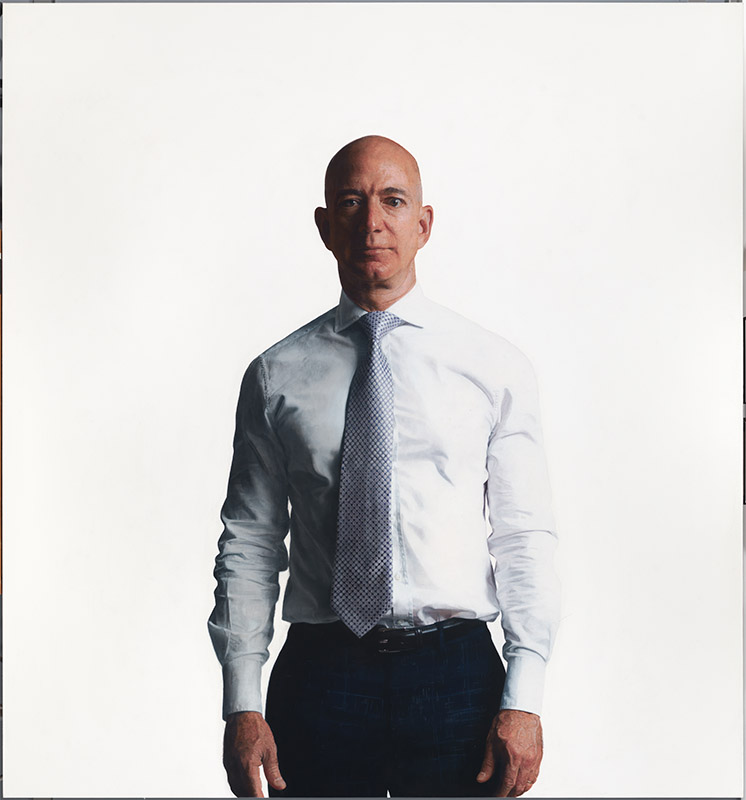Learning about the mission of the National Portrait Gallery in my research changed the way I approached the gallery. Since 1968, they have attempted to create a uniquely American narrative with a variety of individuals who commandeer their own piece of American history. Within the context of the class and our conversations, I had to put on a critical lense to truly examine the way the institution strives to achieve that goal or where they fail to do so. As one might expect, it was a little of both. As this class goes along we are becoming increasingly aware that curation will always fall short of someone’s expectations, as it should. Part of human nature is a diversity of viewpoints based on individual experience, viewpoints which were present everywhere at the National Portrait Gallery.
The National Portrait Gallery is curating its own dictionary of American culture within the context of being a federal institution. They are non-partisan as they make no overt statements promoting one policy or person over the other. However, saying that they are apolitical would be incorrect. When the class visited, we had a unique experience in the sum of sites we have visited. Unlike Smithsonians past, there was no staff there to explain the museum’s mission and to defend it to us bloodthirsty, Generation Z students. The collection immediately drew my critical eye at the sight of Amazon CEO Jeff Bezos surveying the gallery with a frigid, penetrating stare. The colossal size of the portrait reminds the viewer of the man’s immense personal wealth and impact that’s shaped American culture in the past decade. Though Bezos is an innovator of American industry and thus deserves the spot, the wall label carefully omits that Amazon factory workers do not make a living wage. The NPG had taken a clear position on Bezos, and they did not particularly care if I liked it.

Lincoln Schatz. Jeff Bezos, 2008
The first floor exhibitions are proof of the museum’s exponential growth since Andrew Mellon’s personal collection, which made their entire catalog when the museum first opened. The floor had walls of women to acknowledge their impact on America since the beginning of time, excluding men and making it a special place for those who had been disenfranchised. Aside from those women, the portraits are grouped solely by achievements and careers. There is a room of poets including a fresh-faced Edgar Allan Poe, who really aged poorly, who practiced his writings freely until his death. He is juxtaposed by a photograph of a celebrated African American concert pianist from the nineteenth century, Thomas Wiggins, who had been forced into playing benefits for the confederacy during the civil war. The exhibition labels of the American Origins section of the museum are candid about the oppression of some and the oppressor status of others, all who made their mark on American history.

Chuck Close. William Jefferson Clinton, oil on canvas, 2006
The second floor is primarily encompassed by the presidential portraits. The National Portrait Gallery did not begin to commission portraits until George H.W. Bush, but they have collected at least one portrait commissioned by each president. Each label has a description of the public opinion of the president, which was not often a rosy picture. John Tyler’s label has his old moniker, “his accidency”, and if that isn’t candid I don’t know what is. What fascinated me about the portraits of the presidents was the way they stayed traditional to the art form, lagging behind the advancement of art. At the Smithsonian American Art Museum, you can see 20th century art move through impressionism and expressionism, adding abstract elements in later. The presidential portraits stay true to the tradition set by Louis XIV, a realistic depiction flaunting affluence, staying behind SAAM’s collection. They continue in that trend until the turn of the millennium when Bill Clinton and Barack Obama broke the mold by commissioning truly unique forward-facing portrait styles. I look forward to the portrait commissioned by the current president, to seeing whether if he goes conservative in portraiture as with his policies or if he surprises the nation and commissions some innovative art.
By far the least apolitical and most modern exhibition was The Outwin 2019: American Portraiture Today, the annual portraiture competition discussing current events. There was exposure of queer life, immigration, and mental health. The portraits have a wider range of more critical issues, celebrating their positive aspects and depicting oppression and other challenges. This exhibition struck me the most because it contained the voices of Americans today and what they saw as the events that define our culture. The portrait “Brendan and Tyrice” by Zun Lee celebrates ordinary life and love between two men, which they have historically stuck by. In 2010 NPG received public backlash over an entire exhibition about LGBTQIA love, but the NPG refused to take it down and kept the exhibition for its original time. Though the gallery had a role in funneling those voices and defining America, I found the depiction to be open about the different facets of society today, in time I am sure that the NPG will continue to update their collection to continue reflecting the diversity in the United States. The National Portrait Gallery was a great example of how a federal institution can engage with the arts and America despite the limitations that accompany being risk-averse.
/https://public-media.secure.si.edu/portrait_competition/EXH_PC_373_Buentello-Ruth-Leonela-1_cropped.jpg)
Ruth Leonela Buentello. Desaparecidos en el Río Bravo, Acrylic on canvas with fabric, 2018
